The Physiology of Sleep: Unveiling the Mysteries of Deep Sleep and Its Importance
Published by Dr. Emily Rodriguez | Sleep Neuroscience Researcher
 Sleep physiology brain diagram
Sleep physiology brain diagram
Sleep is not merely a passive state of rest; it is a complex, dynamic process that involves intricate interactions between the brain, nervous system, and various physiological processes. Understanding the physiology of sleep is crucial for appreciating why we need sleep, how it affects our health, and what happens when sleep is disrupted. This comprehensive guide explores the fascinating world of sleep physiology, from the molecular mechanisms that drive sleep to the profound impact it has on our physical and mental well-being.
What is Sleep Physiology?
Sleep physiology encompasses the biological processes, mechanisms, and functions that occur during sleep. It involves the study of how the brain and body change during different sleep stages, the regulation of sleep-wake cycles, and the complex interplay between sleep and various bodily systems including the immune system, cardiovascular system, and metabolism.
The Two-Process Model of Sleep Regulation
Sleep is regulated by two main processes that work together to determine when we sleep and how long we sleep:
Process S: Sleep Drive (Homeostatic Sleep Pressure)
The sleep drive, also known as homeostatic sleep pressure, builds up during wakefulness and dissipates during sleep. This process is primarily regulated by adenosine, a neurotransmitter that accumulates in the brain during periods of wakefulness.
Adenosine and Sleep Pressure:
- Adenosine levels increase progressively during wakefulness
- Higher adenosine levels create a stronger drive to sleep
- During sleep, adenosine is metabolized and levels decrease
- This creates a natural cycle of increasing sleep pressure during the day and relief during sleep
 Sleep drive adenosine mechanism
Sleep drive adenosine mechanism
The Role of Caffeine: Caffeine works by blocking adenosine receptors, temporarily reducing the feeling of sleepiness. However, this doesn't eliminate the underlying sleep debt, which continues to accumulate.
Process C: Circadian Rhythm (Biological Clock)
The circadian rhythm is our internal 24-hour biological clock that regulates the timing of sleep and wakefulness. It's controlled by the suprachiasmatic nucleus (SCN) in the hypothalamus, often called the "master clock."
Key Features of the Circadian Rhythm:
- Runs on approximately a 24-hour cycle
- Influenced by environmental cues, particularly light
- Regulates not just sleep but also body temperature, hormone production, and other physiological processes
- Can be disrupted by factors like jet lag, shift work, and exposure to artificial light at night
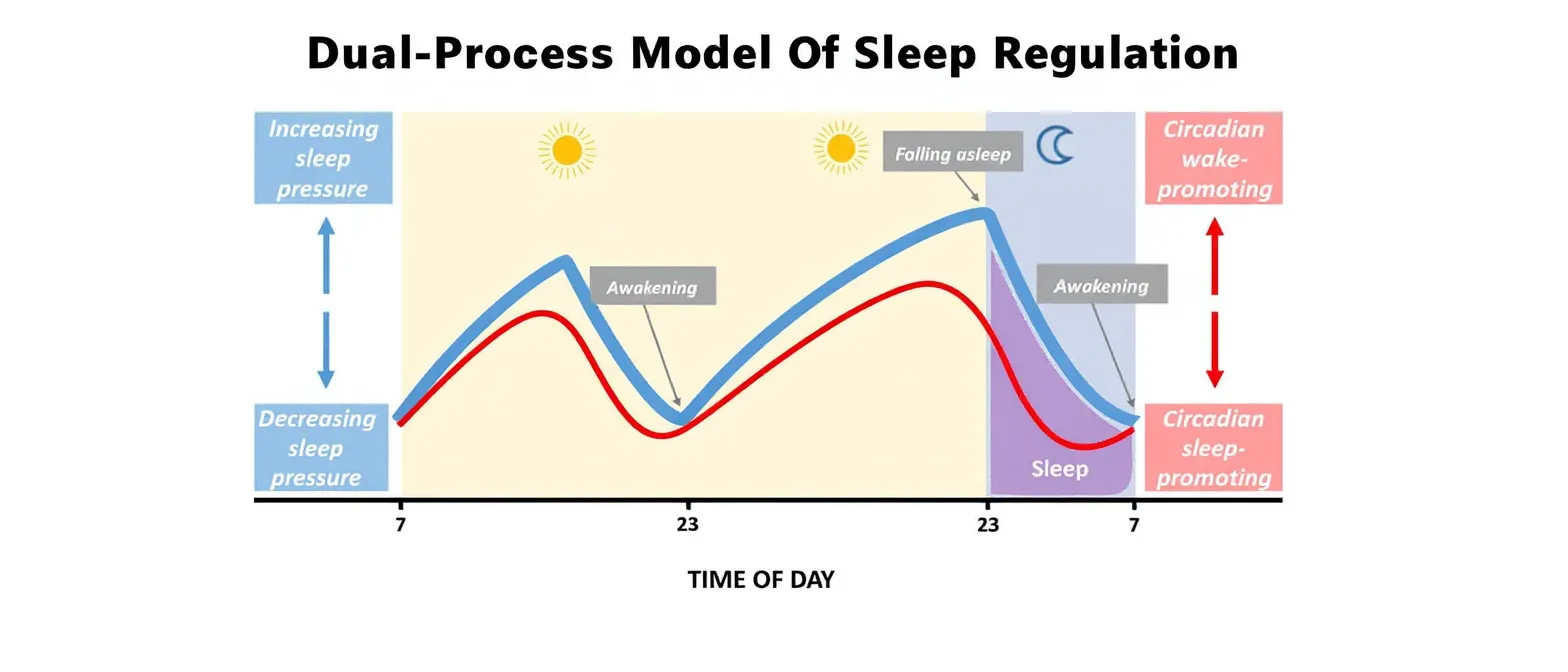 Sleep homeostasis and circadian rhythm
Sleep homeostasis and circadian rhythm
The Sleep Cycle: Understanding Sleep Stages
Sleep is not uniform; it consists of distinct stages that cycle throughout the night. These stages are characterized by different patterns of brain activity, eye movements, and muscle tone.
Non-Rapid Eye Movement (NREM) Sleep
NREM sleep is divided into three stages, each with distinct characteristics:
Stage N1 (Light Sleep)
- Duration: 1-5 minutes
- Brain Activity: Transition from wakefulness to sleep
- Characteristics: Slow eye movements, reduced muscle activity
- Function: Initial relaxation and transition to deeper sleep
Stage N2 (True Sleep)
- Duration: 10-60 minutes per cycle
- Brain Activity: Sleep spindles and K-complexes
- Characteristics: No eye movements, further muscle relaxation
- Function: Consolidation of memories and learning
Stage N3 (Deep Sleep/Slow Wave Sleep)
- Duration: 20-40 minutes per cycle
- Brain Activity: Slow delta waves (0.5-2 Hz)
- Characteristics: Deep relaxation, difficult to awaken
- Function: Physical restoration, immune system strengthening, memory consolidation
Rapid Eye Movement (REM) Sleep
REM sleep is characterized by:
- Duration: 10-60 minutes per cycle
- Brain Activity: Similar to wakefulness (high-frequency, low-amplitude waves)
- Characteristics: Rapid eye movements, muscle paralysis (except for breathing and eye muscles)
- Function: Emotional processing, memory consolidation, dreaming
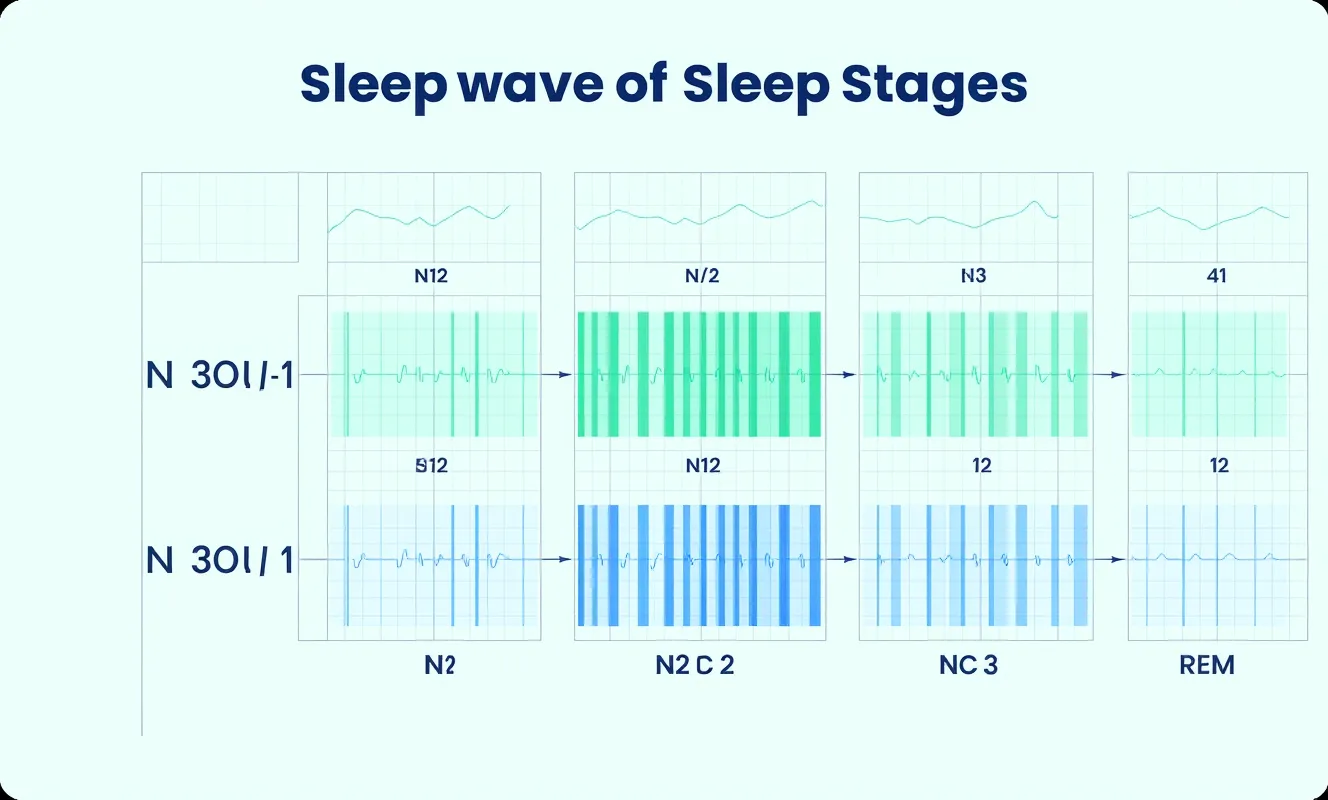 EEG sleep stages diagram
EEG sleep stages diagram
The Sleep Cycle Architecture
A typical night's sleep consists of 4-6 complete sleep cycles, each lasting approximately 90-110 minutes. The distribution of sleep stages changes throughout the night:
Early Night (First Half):
- More deep sleep (N3)
- Shorter REM periods
- Focus on physical restoration
Late Night (Second Half):
- More REM sleep
- Less deep sleep
- Focus on cognitive and emotional processing
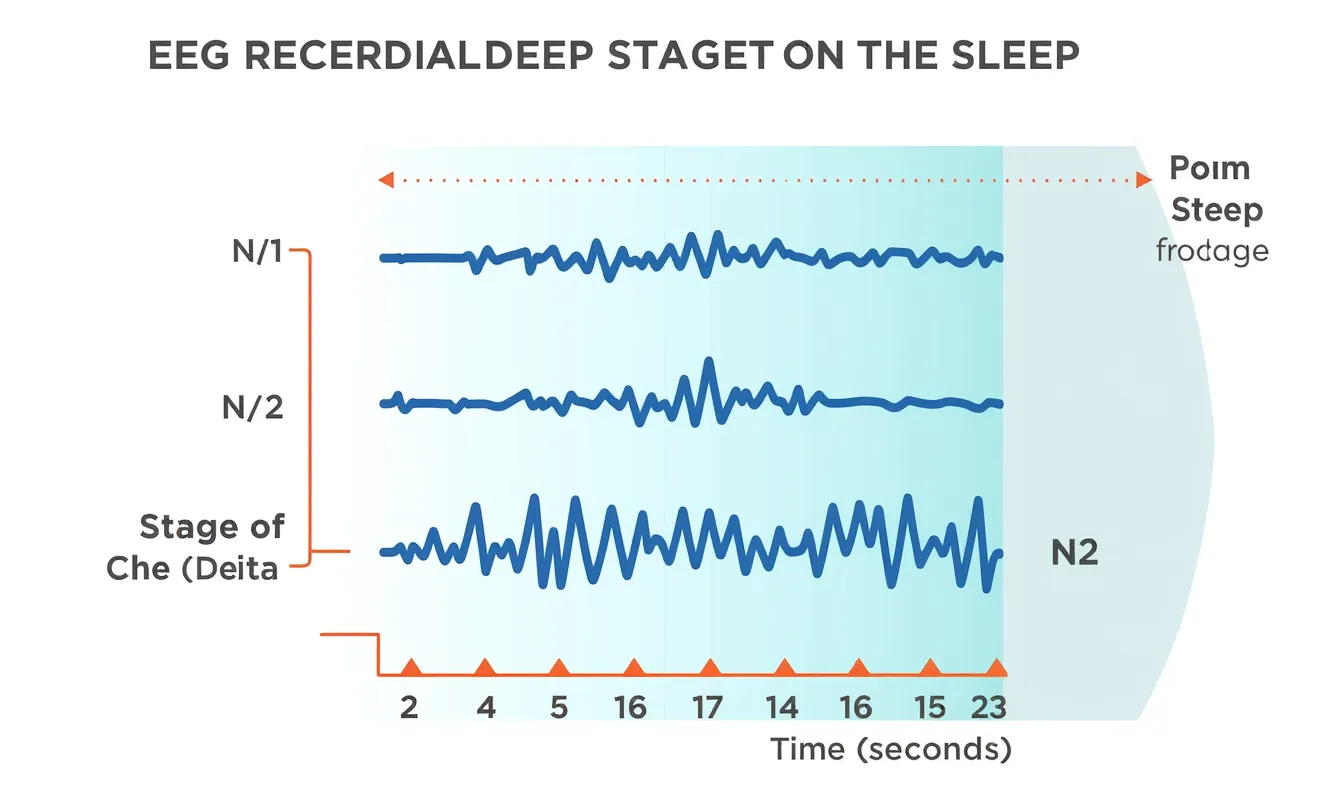 Sleep cycle diagram
Sleep cycle diagram
Brain Mechanisms of Sleep
Neurotransmitters and Sleep
Several key neurotransmitters regulate sleep and wakefulness:
Sleep-Promoting Neurotransmitters:
- GABA (Gamma-Aminobutyric Acid): The primary inhibitory neurotransmitter that promotes sleep by reducing neural activity
- Adenosine: Builds up during wakefulness and promotes sleep
- Melatonin: Hormone that signals the body it's time to sleep
Wake-Promoting Neurotransmitters:
- Histamine: Promotes wakefulness and alertness
- Orexin (Hypocretin): Maintains wakefulness and regulates appetite
- Norepinephrine: Increases alertness and attention
- Serotonin: Modulates mood and sleep-wake cycles
Brain Regions Involved in Sleep
Thalamus:
- Acts as a relay station for sensory information
- Becomes less active during deep sleep, reducing external stimuli
- Plays a role in sleep spindles during N2 sleep
Hypothalamus:
- Contains the suprachiasmatic nucleus (master clock)
- Regulates sleep-wake cycles and circadian rhythms
- Controls body temperature and hormone production
Brainstem:
- Contains nuclei that regulate muscle tone during REM sleep
- Controls breathing and heart rate during sleep
- Regulates transitions between sleep stages
Basal Forebrain:
- Contains neurons that promote sleep
- Regulates sleep onset and maintenance
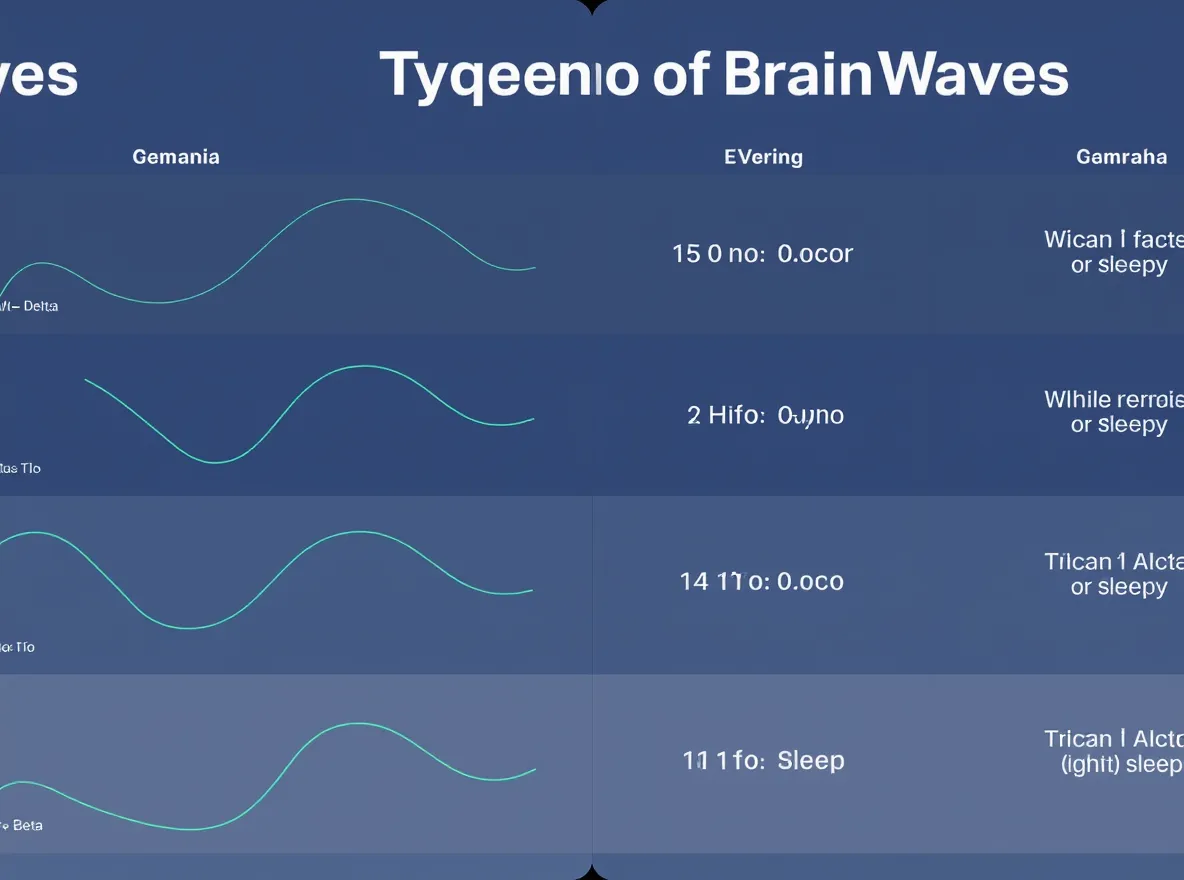 Sleep brainwaves types
Sleep brainwaves types
Physiological Changes During Sleep
Cardiovascular System
During sleep, the cardiovascular system undergoes significant changes:
Blood Pressure:
- Decreases by 10-20% during sleep
- Lowest levels typically occur during deep sleep
- This "nocturnal dipping" is important for cardiovascular health
Heart Rate:
- Slows down during sleep, especially during deep sleep
- May increase during REM sleep due to increased brain activity
- Irregular heart rhythms are more common during sleep
Blood Flow:
- Redistributed to prioritize the brain and vital organs
- Reduced flow to skeletal muscles
- Increased flow to the skin for temperature regulation
Respiratory System
Breathing Patterns:
- More regular and slower during NREM sleep
- May become irregular during REM sleep
- Reduced respiratory drive during deep sleep
Airway Resistance:
- Increased during sleep due to muscle relaxation
- Can lead to snoring and sleep apnea in some individuals
- Most pronounced during REM sleep
Endocrine System
Growth Hormone:
- Primarily secreted during deep sleep
- Essential for tissue repair and growth
- Peak secretion occurs in the first few hours of sleep
Cortisol:
- Follows a diurnal pattern with lowest levels at night
- Begins to rise in the early morning hours
- Helps prepare the body for wakefulness
Melatonin:
- Secreted by the pineal gland in response to darkness
- Peaks in the middle of the night
- Regulates sleep-wake cycles and seasonal rhythms
Immune System
Sleep plays a crucial role in immune function:
Cytokine Production:
- Increased production of pro-inflammatory cytokines during sleep
- Important for fighting infections and inflammation
- Sleep deprivation can impair immune responses
T-Cell Function:
- Enhanced T-cell activation during sleep
- Better immune memory formation
- Improved response to vaccinations
Inflammatory Markers:
- Reduced inflammation during adequate sleep
- Sleep deprivation increases inflammatory markers
- Links to chronic diseases like heart disease and diabetes
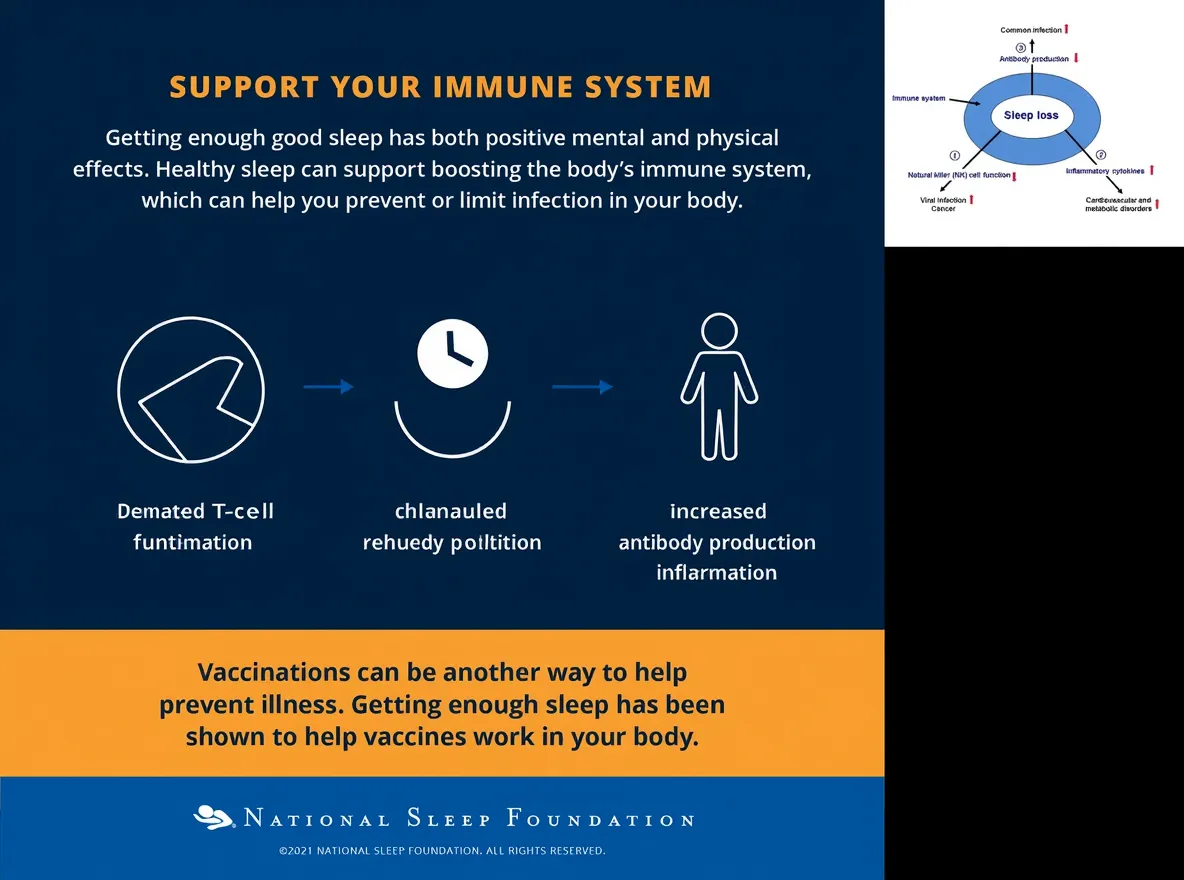 Immune system sleep benefits
Immune system sleep benefits
Sleep and Memory Consolidation
One of the most important functions of sleep is memory consolidation:
Declarative Memory (Facts and Events)
- NREM Sleep: Consolidation of factual knowledge and events
- Hippocampus: Active during NREM sleep, transferring memories to long-term storage
- Sleep Spindles: Associated with memory consolidation during N2 sleep
Procedural Memory (Skills and Procedures)
- REM Sleep: Consolidation of motor skills and procedures
- Motor Cortex: Active during REM sleep, strengthening neural connections
- Practice Effect: Sleep enhances learning from practice
Emotional Memory
- REM Sleep: Processing and regulation of emotional memories
- Amygdala: Active during REM sleep, helping regulate emotional responses
- Stress Reduction: Sleep helps reduce emotional reactivity to stressful events
Sleep Deprivation and Its Effects
Acute Sleep Deprivation (1-2 nights)
Cognitive Effects:
- Impaired attention and concentration
- Reduced reaction time
- Decreased working memory capacity
- Poor decision-making abilities
Physical Effects:
- Increased appetite and food intake
- Reduced glucose tolerance
- Elevated stress hormone levels
- Impaired immune function
Chronic Sleep Deprivation (weeks to months)
Long-term Health Consequences:
- Increased risk of obesity and type 2 diabetes
- Higher risk of cardiovascular disease
- Impaired immune function
- Increased risk of mental health disorders
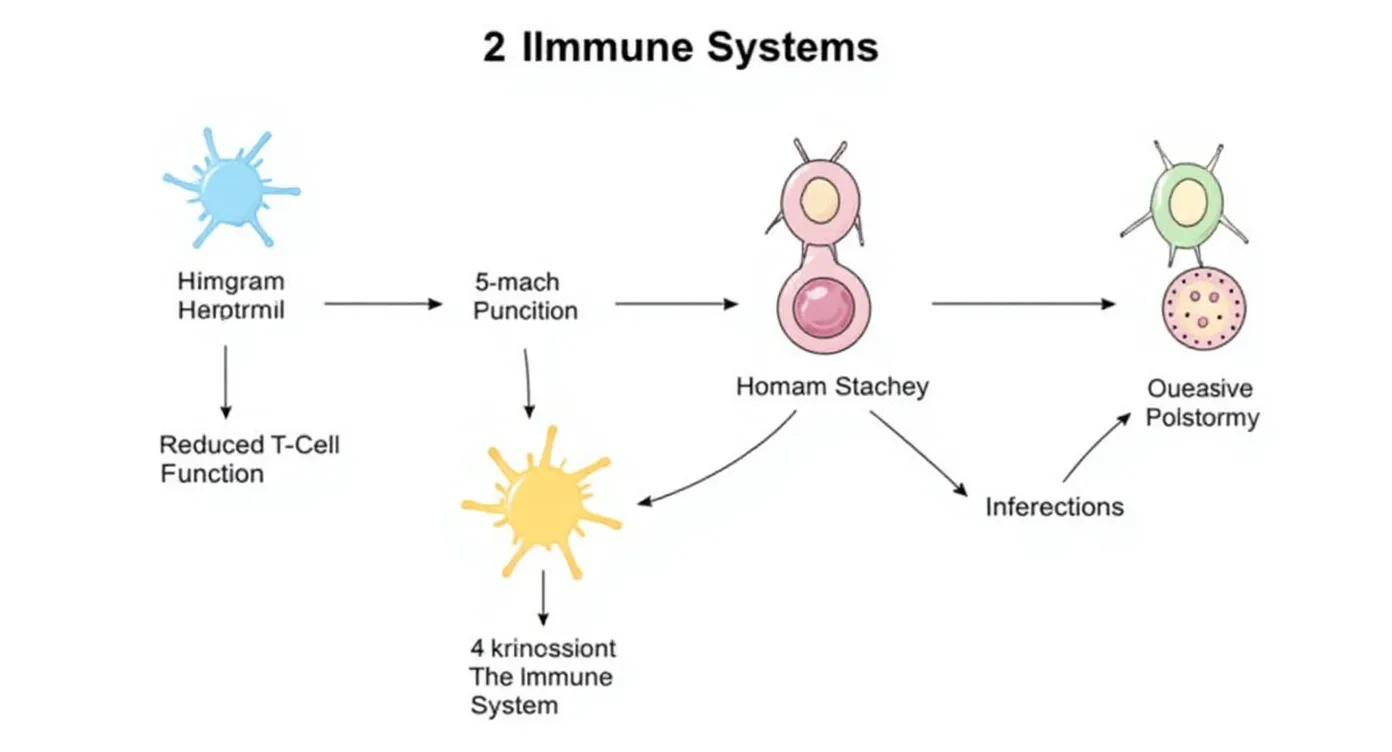 Sleep loss immune impact
Sleep loss immune impact
Sleep Disorders and Physiology
Insomnia
- Disruption of normal sleep architecture
- Increased time in light sleep, reduced deep sleep
- Hyperarousal of the nervous system
- Altered neurotransmitter balance
Sleep Apnea
- Interrupted breathing during sleep
- Fragmented sleep architecture
- Reduced deep sleep and REM sleep
- Increased sympathetic nervous system activity
Narcolepsy
- Disruption of orexin/hypocretin system
- Abnormal REM sleep regulation
- Sleep attacks and cataplexy
- Fragmented nighttime sleep
Optimizing Sleep Physiology
Sleep Hygiene Practices
Environment:
- Cool, dark, and quiet bedroom
- Comfortable mattress and pillows
- Optimal temperature (60-67°F/15-19°C)
Timing:
- Consistent sleep schedule
- Regular bedtime routine
- Avoid large meals and caffeine before bed
Behavior:
- Use bed only for sleep and intimacy
- Avoid electronic devices before bedtime
- Regular exercise (but not close to bedtime)
Circadian Rhythm Optimization
Light Exposure:
- Bright light exposure in the morning
- Reduce blue light exposure in the evening
- Maintain regular exposure to natural light
Timing:
- Consistent meal times
- Regular exercise schedule
- Stable social rhythms
The Future of Sleep Physiology Research
Emerging Areas of Study
Sleep and Metabolism:
- Understanding the link between sleep and metabolic health
- Developing sleep-based interventions for metabolic disorders
- Personalized sleep recommendations based on metabolic profiles
Sleep and Aging:
- How sleep changes with age
- Sleep interventions to promote healthy aging
- Preventing age-related sleep disorders
Sleep and Technology:
- Wearable devices for sleep monitoring
- AI-powered sleep analysis
- Personalized sleep recommendations
Conclusion
The physiology of sleep is a complex and fascinating field that continues to reveal new insights into how sleep affects our health and well-being. From the molecular mechanisms that drive sleep to the profound impact it has on every system in our body, understanding sleep physiology helps us appreciate why sleep is not a luxury but a biological necessity.
As research continues to uncover the mysteries of sleep, we gain new tools and strategies for optimizing our sleep health. Whether through improved sleep hygiene, better understanding of our individual sleep needs, or targeted interventions for sleep disorders, the knowledge of sleep physiology empowers us to take control of our sleep and, consequently, our overall health.
Key Takeaways
- Sleep is regulated by two main processes: homeostatic sleep drive and circadian rhythm
- Sleep consists of distinct stages (NREM and REM) that cycle throughout the night
- Different sleep stages serve different functions for physical and mental restoration
- Sleep affects virtually every system in the body, from cardiovascular to immune function
- Sleep deprivation has profound effects on health, cognition, and well-being
- Understanding sleep physiology helps optimize sleep quality and overall health
- Sleep disorders disrupt normal physiological processes and can have serious health consequences
References
- Carskadon, M. A., & Dement, W. C. (2017). Normal human sleep: an overview. In Principles and Practice of Sleep Medicine (6th ed., pp. 15-24).
- Borbély, A. A., & Achermann, P. (1999). Sleep homeostasis and models of sleep regulation. Journal of Biological Rhythms, 14(6), 557-568.
- Siegel, J. M. (2009). The neurobiology of sleep. Seminars in Neurology, 29(4), 277-296.
- Walker, M. P. (2017). Why we sleep: Unlocking the power of sleep and dreams. Simon & Schuster.
- National Sleep Foundation. (2020). Sleep in America Poll: Sleep and Sleep Disorders.
Related Articles
- Sleep and Immunity: Enhanced T-Cell Activation During Sleep
- The Science of Sleep Apnea: Understanding the Mechanics of Breathing During Sleep
- REM vs Non-REM Sleep: Understanding Your Sleep Stages
